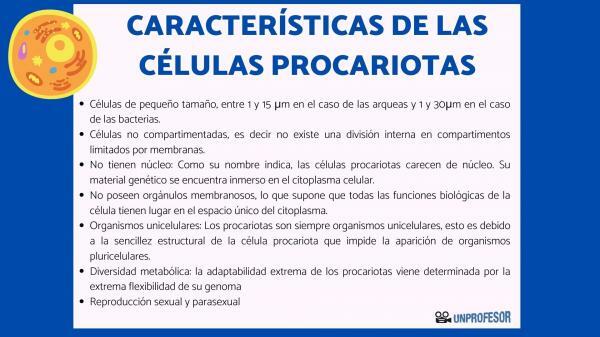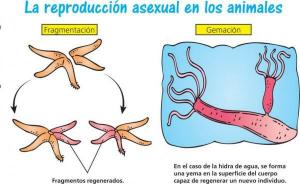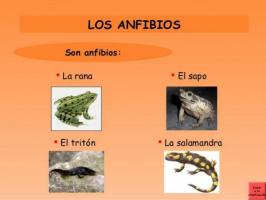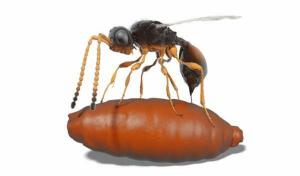Characteristics of PROCARIOTA cells: structural and functional

The prokaryotes are the set of organisms that include the bacteria or eubacteria and arches oarcheas. Together they are ubiquitous organisms (they are everywhere). They can be found in all kinds of environments ranging from the acidic environment of the stomach to underwater hot springs. Its structure is very simple and its size is small. Although archeas and bacteria present important differences between them, they have a series of common characteristics typical of all prokaryotic organisms.
In this lesson from a TEACHER we explain what the characteristics of prokaryotic cells at the structural level and at the functional level.
Prokaryotic organisms are unicellular organisms with a simple structure, below we will see what are the main structural characteristics of the prokaryotic cells.
- Small cells, between 1 and 15 μm in the case of archaea and 1 and 30 μm in the case of bacteria.
- Non-compartmentalized cells, that is to say, there is no internal division into compartments limited by membranes. The only membrane in prokaryotic cells is the plasma membrane.
This means that some of the characteristics of prokaryotic cells are:
- They have no nucleus: As the name suggests, prokaryotic cells lack a nucleus. Its genetic material is immersed in the cell cytoplasm.
- They do not have membranous organelles, which means that all biological functions of the cell take place in the single space of the cytoplasm. However, the plasma membrane of these organisms presents folds that penetrate into the cytoplasm and that contain enzymes that regulate some metabolic processes such as ATP synthesis or photosynthesis in bacteria photosynthetic. These invaginations of the cell membrane are called mesosomes.
At the level of the plasma membrane, there are differences between archaea and bacteria, they have different lipid composition. Archaea have ether-like bonds in the lipids that make up the plasma membrane, rather than ester-like bonds like those found in bacteria and eukaryotic cells. In the case of some archeas, the plasma membrane is made up of a single lipid layer.
Simple chromosome structure
In prokaryotic cells, all the information necessary for life is contained in a single molecule of Naked, double-stranded, and circular DNA, closed by a covalent bond, which is called bacterial chromosome. In addition to the genetic information contained in said chromosomes, many prokaryotes have extrachromosomal genetic material, also in molecules of double-stranded and circular DNA that contains genetic information that is not essential for the growth of the organism under conditions normal.
These extrachromosomal DNA structures are called plasmids. Plasmids are small molecules that contain only a few genes, they have the ability to replicate independently of the bacterial chromosome and can be transmitted between different organisms prokaryotes. Plasmids play an important role in the acquisition of antibiotic resistance by bacteria. Each prokaryotic cell usually produces many copies of a plasmid while producing a single copy of its chromosome.
- Unicellular organisms: Prokaryotes are always unicellular organisms, this is due to the structural simplicity of the prokaryotic cell that prevents the appearance of multicellular organisms. Its level of structuring does not allow coordination mechanisms to appear and the appearance of cells specialized in certain functions; as it does in the case of the eukaryotic cell.
- Cell wall presence: All prokaryotic organisms have an outer covering that protects the plasma membrane: the cell wall. It is a rigid structure that shapes the microorganism. There are differences in the composition and structure of the cell wall of bacteria and archeas. In the case of archeas, the cell wall does not contain peptidoglycans as in bacteria, but rather molecules of similar composition called pseudopeptidoglycans. In addition, the cell wall of the archeas can also contain glycoproteins or proteins. There is a genus of archea that does not have a cell wall: Thermoplasma
- Capsule presence in many cases: Although it is not a structure present in all prokaryotic organisms, the capsule is present in most of them. It consists of a layer external to the cell wall of gelatinous consistency, formed by proteins, glycoproteins and water; and that allows prokaryotes to adhere to the substrate and form colonies through the aggregation of several individuals.
- Absence of cytoskeleton: Prokaryotic cells do not have a cytoskeleton (cytoplasmic structure composed of microtubules) and the structure responsible for shaping these organisms is their cell wall.
- Presence of ribosomes: The only organelles present in prokaryotes are ribosomes. Ribosomes are nonmembranous organelles composed of two subunits that are made up of RNA and proteins. They are organelles that are responsible for the synthesis of proteins from the information contained in the messenger RNA molecules. The ribosomal RNA of archaea and bacteria has a totally different composition and is one of the phylogenetic criteria that allow differentiating these two organisms into separate domains prokaryotes.
We continue to know the characteristics of prokaryotic cells to focus on their function. The prokaryotic organisms have a number of functional characteristics that explains its ease to colonize all kinds of environments and adapt quickly to changes. The main functional characteristics of prokaryotes are the following:
Metabolic diversity
The extreme adaptability of prokaryotes is determined by the extreme flexibility of their genome (set of genes that contains the genetic information of an organism). Prokaryotic organisms have the ability to duplicate, delete, or alter their genes. That is, they present a rate of very high mutation.
In addition to this high mutation capacity, prokaryotes have the ability to exchange genetic material with other microorganisms present in their environment, in a process called horizontal gene transfer.
Horizontal gene transfer is an especially important mechanism in the case of archeas. Horizontal gene transfer allows prokaryotes to acquire adaptations to the environment present in other microorganisms, which allows them to rapidly colonize new environments. This horizontal gene transfer mechanism constitutes a powerful dominant force in the evolution of prokaryotes and it would explain, for example, the rapid appearance of resistance to antibiotics in bacteria and especially in archaea.
Sexual and parasexual reproduction
Asexual reproduction: Prokaryotes reproduce by asexual reproduction.
- Bipartition or reproduction by cellular fission: it is the simplest type of reproduction, in which an individual (cell) divides to give rise to two cells or individuals. The successive division by bipartition gives rise to the creation of colonies of clonal organisms (with identical genetic information).
- Sporulation: this type of asexual reproduction implies the formation of endospores (forms of resistance) in response to unfavorable environmental conditions. It only occurs in some bacteria but not in archaea.
Parasexual reproduction: Genetic recombination in prokaryotes. Parasexual reproduction is one in which two organisms exchange genetic information or acquire new genetic information from another individual. These mechanisms provide genetic diversity to prokaryotic organisms, since thanks to them the recombination of the genetic information and allows, together with the high mutation rate, the appearance of new variants of the species of organisms prokaryotes.
There are various mechanisms of genetic recombination in prokaryotes.
- Transformation: it is the process by which a prokaryotic organism is capable of incorporating exogenous DNA, coming from other prokaryotic organisms and which is free in the environment.
- Transduction: It is the passage of genetic material from one individual to another through a bacteriophage (virus that infects bacteria).
- Conjunction: It consists of the unidirectional exchange of genetic material from a donor individual to a recipient individual, through direct contact between them. Plasmids are the elements that are most frequently transmitted by this mechanism.
Rapid growth
Most prokaryotic organisms reproduce very rapidly, so the time that has elapsed generation time (time from the birth of one generation to the birth of the next) is very short. For a bacterium the average generation time is 20 minutes. The high growth makes possible the rapid colonization of new environments.



